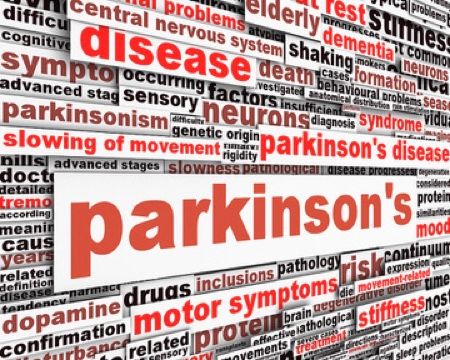Is Parkinson's Disease Hereditary?

Parkinson’s Disease (PD) is one of the most studied and discussed neurological diseases the world over. It affects an estimated 10 million people, according to figures from World Health Organization. While much progress has been made in terms of treatments, few studies have looked into the genetics behind PD and whether it can be inherited. This guide aims to provide comprehensive information regarding the research that has been done in this area, and explain the various factors that can affect the inheritance of PD in a family.
We will look at what PD is, the genetic mutations associated with it, the environmental triggers that increase the risk of familial PD, the risk factors involved, how to test for PD, treatments and management of the disease, and what resources are available for those affected. Lastly, we will answer any commonly asked questions about how PD has been found to be hereditary.
What is Parkinson’s Disease?
Parkinson’s Disease (PD) is a type of progressive neurological disorder that affects one’s movement and motor skills. It can start with small symptoms that gradually become worse, making it hard to complete everyday tasks. While there is no cure for PD, treatments are available to help manage its symptoms.
The most common signs and symptoms of PD include:
- Tremors or shaking, usually in the hands, feet, arms, and face
- Stiffness or rigidity of the arms, legs, and trunk
- Slow movements
- Difficulty walking
- Problems with balance
- Impaired speech or writing difficulties
- Depression, anxiety, or other mood disorders
PD can also cause more rare symptoms such as sleep disturbances, changes in sense of smell, memory problems, and impaired blood pressure regulation. Everyone experiences PD differently and the severity of the symptoms can vary from person to person.
It’s important to consult a doctor if you have any of the symptoms of PD, or if you notice changes in your mobility, coordination, or balance. Early diagnosis is key to finding a treatment plan that can help manage the symptoms and slow the progression of the disease.
Genetics Behind Parkinson's Disease
Parkinson's disease (PD) is a chronic and progressive disorder of the nervous system that affects movement. It's caused by the degeneration or death of dopamine-producing neurons in the brain, resulting in reduced levels of dopamine. This can lead to an array of physical symptoms including tremors, slow movement, stiffness, changes in posture, and difficulties with balance.
Recent research has identified genetic mutations associated with PD, allowing doctors to detect if someone has a family history of the condition. Scientists have determined that there are two main types of genetic mutations linked to PD – autosomal dominant and X-linked recessive.
The autosomal dominant form of PD is the result of inheriting a mutated gene from a single parent. This means that each time a person with this type of PD passes the gene on to their children, the chance of them inheriting the issue increases. In contrast, the X-linked recessive form of PD is caused by a mutation in both copies of the gene from both parents. This type is much rarer, but those who inherit it still have a higher risk of developing PD.
While genetics can play a role in one's risk for PD, it’s important to note that environmental triggers, lifestyle factors, and other medical conditions can also influence the likelihood of the disease being inherited. For instance, dire lifestyle factors such as smoking and lack of exercise may increase one's chances of developing PD.
Causes of Inheritance
Parkinson’s Disease (PD) is a progressive neurodegenerative disorder that affects movement, mood, and behavior. While there is no definitive cause for PD, researchers have found that it can be hereditary. Understanding the genetics and environmental factors behind this inheritance can help explain why some families are more prone to PD.
The most common cause of hereditary PD is a mutation in the LRRK2 gene, which is responsible for producing proteins that control nerve cell communication. This mutation alters the function of these proteins, leading to impaired movement and Parkinsonian symptoms. Additionally, mutations in several other genes may be associated with PD, including SNCA, GBA, PINK1, and PARKIN.
Environmental factors also play a role in the risk of PD inheritance. Exposure to toxins, such as certain pesticides, or having a prior head injury has been linked to an increased risk of PD inheritance. In addition, older age, smoking, and lack of physical activity are other environmental factors that have been linked to higher rates of PD inheritance.
It is important to note that while researchers have identified genetic mutations and environmental factors associated with PD inheritance, the exact cause of the disease is still unknown. The combination of a person’s genetic makeup and environmental exposure will determine their risk of developing PD.
Risk Factors of Inherited Parkinson’s Disease
Parkinson’s Disease (PD) is a complex disorder involving a number of genetic and environmental factors that can increase the chances of it being inherited in a family. Family history is an important factor to consider when looking at PD risk, as it could mean having a higher risk of developing the disease.
Studies have shown that if a person has a close relative with PD, they will have about a four-times increased chance of developing the condition themselves. Other relatives such as grandparents, aunts, uncles, and siblings also add to the risk, although to a lesser degree.
There is evidence that the age of onset of PD can differ between family members and also influence the risk of inheritance. Those who are younger in their family to be diagnosed with PD may be at a higher risk of developing the disease compared to other relatives.
Research has also suggested that exposure to certain environmental toxins could be linked to increased risk of inherited PD. For example, those exposed to pesticide residues or metals such as lead may have an increased risk of PD. Additionally, there have been studies that suggest that stress and certain viral infections could be associated with increased PD risk.
It is important to note that although there are certain risk factors associated with PD, not everyone who has a family member with PD will develop the condition themselves. In some cases, lifestyle factors and other environmental factors play a larger role in whether someone does or does not develop PD.
Inheritance Patterns of Parkinson's Disease
Parkinson’s Disease (PD) is a neurodegenerative disorder that affects movement, balance, and coordination. It is caused by the loss of dopamine-producing brain cells, resulting in a variety of motor and non-motor symptoms. A family history of PD increases the risk of inheriting the disorder. In this section, we will explore the different types of inheritance patterns for PD.
It is important to note that not all cases of PD are inherited. It is estimated that only 10 to 15 percent of PD cases are hereditary – meaning that the majority of cases are caused by environmental factors or occur spontaneously. That being said, scientists have identified a few genetic mutations associated with PD which can be passed down from parent to child, leading to an increased risk of PD within the same family.
The two most common types of inheritance patterns observed in PD are autosomal dominant and X-linked recessive. Autosomal dominant refers to an inheritance pattern in which a mutation on one gene, inherited from one parent, is enough for a person to develop PD. X-linked recessive refers to an inheritance pattern in which a mutated gene on the X chromosome must be inherited from both parents in order to cause the disorder.
In some cases, PD may skip generations, meaning that it will affect one generation but not the next. This is known as reduced penetrance. Reduced penetrance occurs when the mutation required for PD predisposition is not inherited or expressed in the individual, making it difficult to predict who within a family will actually pass down the disorder.
In conclusion, PD is a complex disorder where inheritance patterns vary depending on the type of mutation present in the family. While only a small percentage of cases are considered hereditary, it’s important to understand the different types of inheritance patterns associated with PD in order to inform our treatment decisions and assess the risk of passing the disorder down to future generations.
Testing for Parkinson's Disease
If you are worried that you may have inherited a genetic mutation that increases your risk of developing Parkinson's Disease (PD), then it is possible to test for these genetic variants with DNA testing. This type of testing can determine if an individual carries a gene mutation linked to PD. Although the presence of a gene mutation does not guarantee that you will develop the condition, it can help to provide an indication of your risk.
DNA testing involves using a sample of your saliva or blood which is then sent off to a laboratory for analysis. The results of the tests will then tell you whether or not you carry any genetic variants associated with PD. It is important to note that even if the test shows that you do not carry any of these genetic variants, you may still be at risk of developing PD in the future.
In some cases, genetic testing for PD can also be done on family members, such as siblings and children. This type of testing can help to determine if a disease is being passed down from one generation to the next. Additionally, it can be useful for those looking to have children and wanting to assess their potential risk of passing on PD.
Overall, understanding if you are at risk of developing PD through genetic testing can be invaluable in understanding your family history and taking the necessary steps to keep yourself healthy. If you are considering getting tested, it is important to speak with your doctor to determine if it is right for you.
Treatment and Management of Parkinson's Disease
Parkinson’s Disease (PD) is a progressive and debilitating disorder that affects millions of people worldwide. It is caused by a lack of the neurotransmitter dopamine in the brain which leads to a variety of symptoms including difficulty with movement, coordination, and balance. There is currently no known cure for PD, however, treatments can slow down the progression of the disease and help to manage its symptoms.
The most common treatment for PD is medication. These medications are designed to boost the levels of dopamine in the brain which helps to improve motor skills and reduce tremors. In addition to medications, physical therapy is also beneficial for PD patients. Physical therapists can develop specialized exercises which help to improve mobility, coordination, and balance. Other treatments such as speech therapy and occupational therapy may also be recommended depending on individual needs.
Lifestyle modifications can also be beneficial for those with PD. These include avoiding high-stress situations, getting plenty of exercise, and avoiding too much caffeine. Additionally, a balanced diet consisting of healthy proteins, fruits, and vegetables can help to improve physical and cognitive functioning.
Finally, support groups can help to provide emotional support for those living with PD. These groups can give individuals a platform to discuss their experiences and share their coping strategies. Support groups can also be beneficial for caregivers, family members, and friends as they offer support and understanding.
Overall, there are many treatments and management strategies that can help to improve the quality of life for those living with PD. While there is no cure for this disease, these treatments can help to slow down its progression and provide relief from its symptoms.
Resources for PD
If you or someone in your family has been diagnosed with Parkinson’s Disease (PD), there are many resources available to help you better understand the condition and how to cope with it. The following is a list of some of the resources available to those living with PD and their families.
- The National Parkinson Foundation – This organization offers education, support, and research programs aimed at improving quality of life for people living with PD.
- The American Parkinson Disease Association – This association provides information and support for those affected by Parkinson’s and those who care for them.
- The Michael J. Fox Foundation – This foundation funds research and provides information to the public about the latest breakthroughs in PD treatment.
- Parkinson’s UK – This charity provides information and support for people with PD in the UK.
- The Parkinson’s & Movement Disorder Alliance – This organization connects people with PD and their families to local support services.
- We Move – This organization promotes research and development of treatments for movement disorders.
It is important to reach out and use these resources in order to understand and manage PD. Using these resources can help you and your family live a healthier and happier life.
In conclusion, Parkinson's Disease can be inherited. It is important to understand the genetic mutations, environmental triggers, and risk factors associated with PD in order to reduce your risk of developing the condition or passing it on to your family. Furthermore, testing for PD is available, and there are treatments available to manage the symptoms. There are also a wide range of resources available for those with PD and their families, providing much needed support for this debilitating disease.
We hope that this article was able to provide some clarity around the complicated issue of PD and inheritance, and encourage you to seek further information if you have any questions.
FAQs about Parkinson's and Heredity
Many people have questions about the familial link of Parkinson's Disease (PD). Is it something that can be passed down from generation to generation, or is it entirely random? Let’s take a look at the answers to some of the most frequently asked questions about heredity and PD.
- What causes PD to be hereditary?
PD is an inherited neurological disorder caused by mutations in certain genes. In some cases, the genetic mutations are passed down from parents to children. Other times, the mutation occurs spontaneously in the affected person. - How common is PD to be hereditary?
About 10–15% of people with PD have a family history of the condition. This suggests that heredity plays an important role in the development of PD. - Are there different ways PD can be inherited?
Yes. There are different types of inheritance patterns for PD, ranging from autosomal dominant to X-linked recessive. Some forms, such as early-onset PD, can only be inherited. - Can I get tested for PD before I am diagnosed?
Yes. DNA testing exists that can detect whether someone has the genetic variants often associated with PD. However, this type of testing can only tell if you have the genetic variants—not whether you will actually develop PD.
It’s important to remember that although PD has been found to be hereditary, not everyone with the condition has a family history of it. If you have any concerns about your risk for developing PD, talk to your doctor. They can help you assess your individual risk and provide guidance about how to best manage your health.
You might also like this article:









